A ROSS ANDRU birthday tribute, by the celebrated Mr. K…
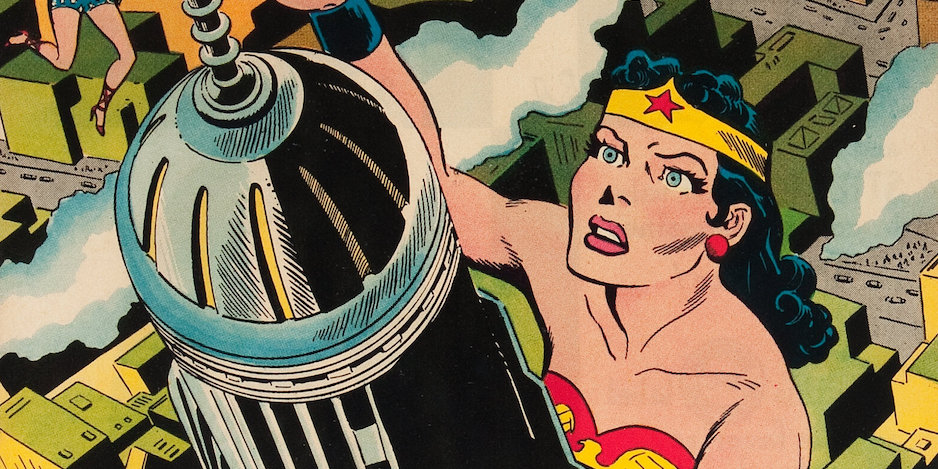
By PAUL KUPPERBERG
Ross Andru (June 15, 1927 – November 9, 1993) was a presence in my life long before I knew who he was.
My earliest memory of comics are from when I was 4 or 5 years old, too young to even read the four color stories I was fascinated by much less have any awareness of who was behind their creation. Or to even be aware that anyone was! Like his Silver Age DC Comics compatriots Curt Swan, Sheldon Moldoff, and Carmine Infantino, Ross Andru could have been anyone.
But once I grew up and began to study the childish things I couldn’t bring myself to put away, I discovered the names behind the lines of those drawings, and later still, found myself in the comic book business and, often working alongside or with the creators of my childhood fascinations. I was fortunate. For every gruff, unpleasant childhood favorite I’ve met, there have been 50 nice, often wonderful human beings, and few were more wonderful than artist/writer/editor Ross Andru. He meant enough to me to devote many words to him in my new memoir, Panel by Panel: My Comic Book Life (now funding on Kickstarter, I might mention), from my first encounter with his art in the pages of the mostly coverless two-for-a-nickel issues of late-1950s Wonder Woman I got as a kid at the local used book shop to our later professional encounters.
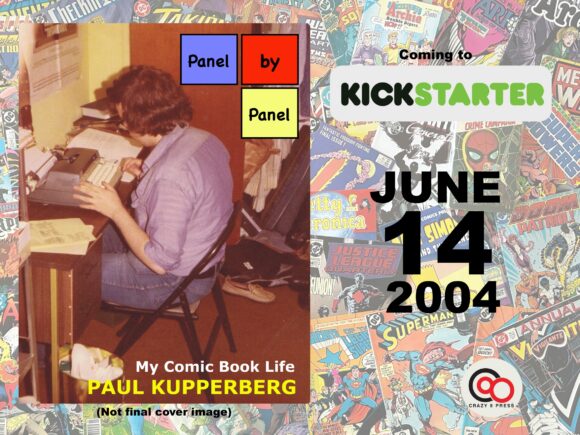
“My earliest memories are of Dell’s Walt Disney comics, and DC’s Rudolph the Red-Nosed Reindeer, and issues of Wonder Woman. The once strong female role model created by William Moulton Marston had been supplanted by writer/editor Robert Kanigher’s more child friendly romance comic/fairy tale featuring mermen, bird boys, genies, and dragons. At 5 years old, though, I loved the vivid art by Ross Andru and Mike Esposito and the no holds barred wackiness of the stories,” I wrote in the book.
Almost 20 years later, I met Ross during my first time on staff at DC Comics (I’d be hired a total of five different times between 1976 and 2009). Here are more excerpts regarding Ross:
— “Though I was supposed to be working, I spent more than a little time in editor’s offices, either trolling for assignments or just because I could. While I avoided bothering the veterans like Schwartz and Boltinoff (Julie scared the hell out of me and Murray never gave any indication he wanted to be friends), there were plenty of younger editors around, like Jack C. Harris, Tony Isabella, Guy H. Lillian III, Larry Hama, Gerry Conway, and Al Milgrom, and at least one vet who enjoyed the company of us eager youngsters, Ross Andru.
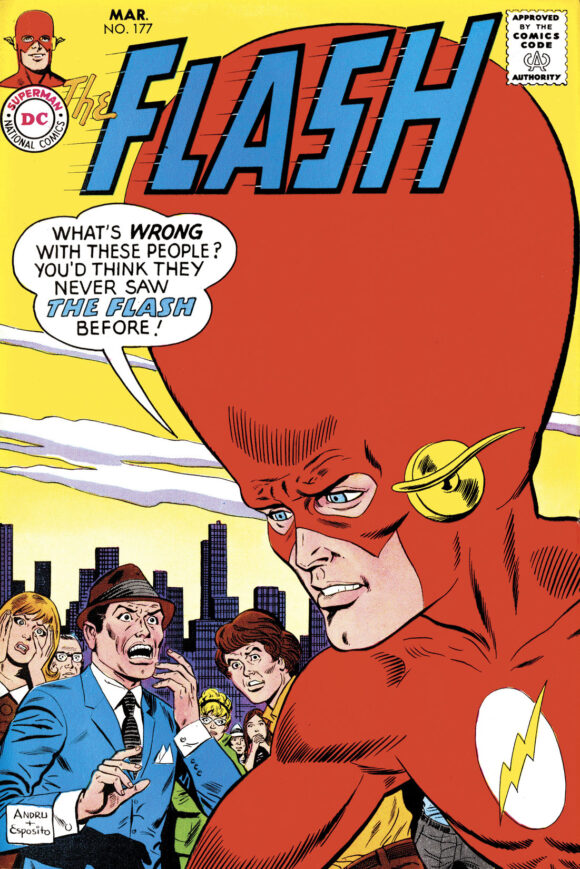
— “Ross was known primarily as an artist for his runs on such features as Wonder Woman, Metal Men, The Flash, and The Amazing Spider-Man (many of them with his frequent partner and inker Mike Esposito), but this talented storyteller was also a writer, humor artist, and editor, and had most recently been the penciller of the groundbreaking Superman vs. The Amazing Spider-Man, the first time heroes from the rival DC and Marvel universes met in a crossover adventure.
— “Ross was a gentle, introspective man who composed beautiful page layouts filled with dynamic action. He was the artist who, along with Robert Kanigher, had created some of the earliest comics I remember reading during their run on Wonder Woman from the 1950s and 1960s, and there I was, 15 years after being enthralled by the man’s work, sitting across from him, my feet up on his desk, talking only sometimes about comics, but mostly discussing one of his favorite topics, conspiracy theories. Ross believed in the existence of the Illuminati and was convinced Freemasons were the force driving behind everything. As a fan of the Robert Shea and Robert Anton Wilson Illuminatus! trilogy (1975) I was versed in the stories and theories, but Ross was never able to convince me of their veracity. I still have the copy he gave me of The Meaning of Masonry (by W.H. Wilmshurst, published by Bell Publishing Company in 1980, a facsimile reprint of the 1927 edition of the book), complete with the passages he underlined and his margin notes….
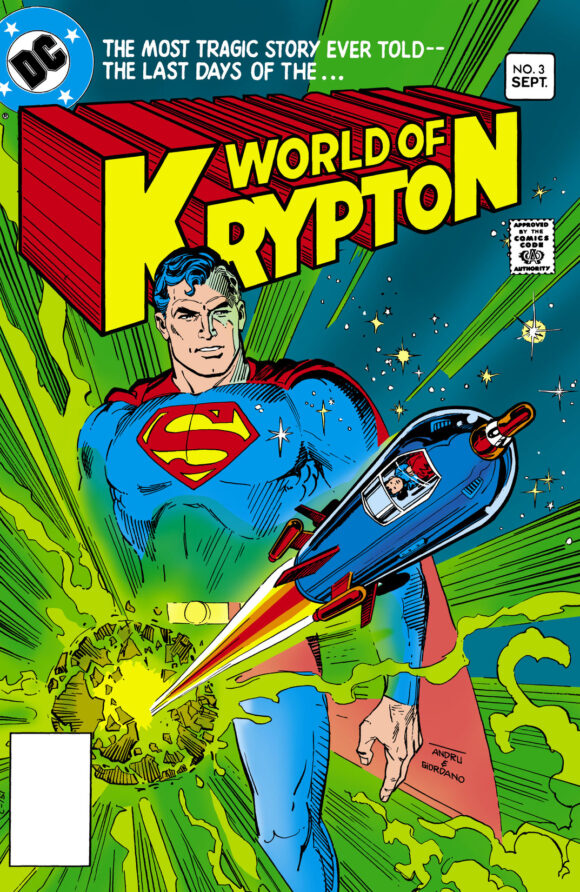
— “The Tor paperback used for its cover the cover of World of Krypton #3 (a 1979 miniseries), a symbolic giant image of Superman super-imposed behind a shot of the exploding planet Krypton as the blunt-nosed cylindric rocket bearing the infant Kal-El to safety blasts into space. But the way the cover is laid out, Krypton is exploding directly over his crotch and the rocket appears to be ejaculating from the vicinity. I went to penciler Ross Andru with the printed cover in hand, laughing, and said, ‘You guys did this on purpose, right?’ Ross, as sweet and guileless a man as I’ve ever met, looked at the piece without comprehension and said, ‘What’s wrong with it?’ ‘It’s beautiful,’ I said, ‘but don’t you think it’s a little suggestive?’ Ross stared at it a moment longer before realization dawned and then he chuckled good naturedly and said, ‘I was wondering why (inker) Dick (Giordano) laughed when I showed him the pencils.’”
Here then, MY 13 FAVORITE ROSS ANDRU (and Mike Esposito!) WONDER WOMAN COVERS:
—
Wonder Woman #96 (February 1958). You may have noticed that I mentioned reading coverless copies of these comics from a second-hand bookshop as a little kid, but I would later go back and catch up and discover Ross and Esposito’s amazing run of covers. (In 2013, I wrote the foreword to DC Comics’ Wonder Woman: the Amazon Princess Archives 1, recounting those wonder years of Wonder Woman.)
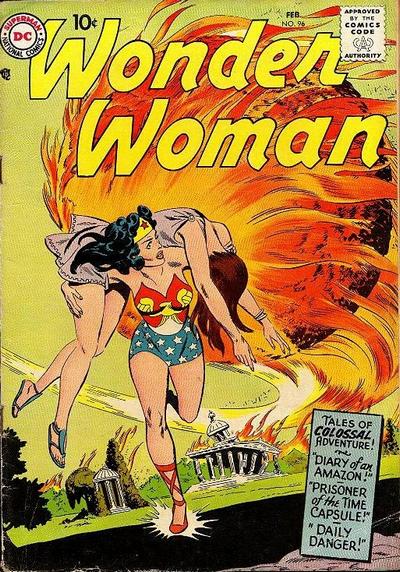
—
Wonder Woman #99 (July 1958)
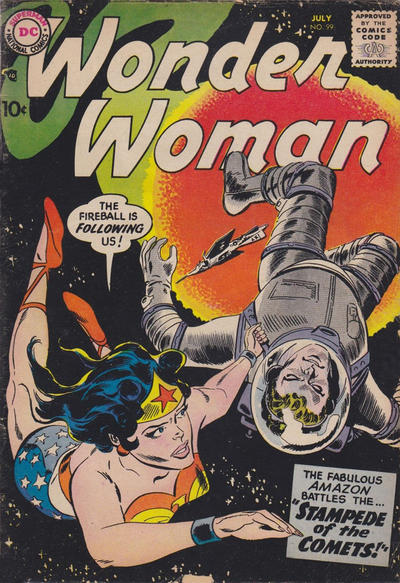
—
Wonder Woman #100 (August 1958). Ross was a master at perspective, making him the perfect artist to render all these tales of giants and monsters concocted from the wacky imagination of Robert Kanigher.
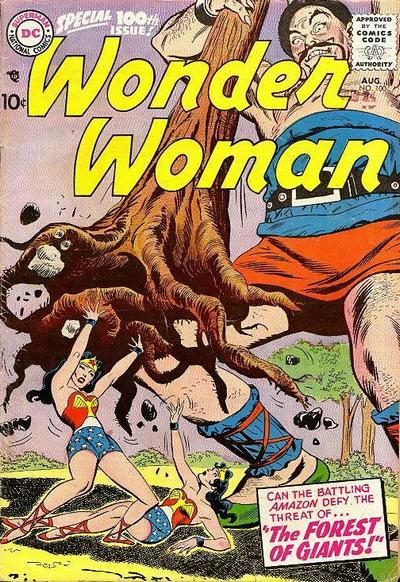
—
Wonder Woman #105 (April 1959)
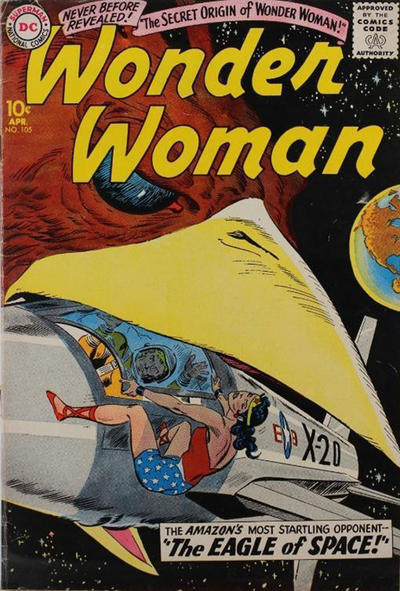
—
Wonder Woman #108 (August 1959). A classic, also showing the ingenious color work of Jack Adler, the colorist behind these covers.
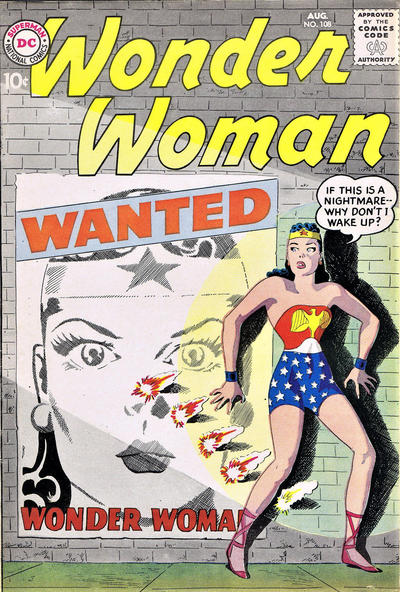
—
Wonder Woman #112 (February 1960). Perspective!
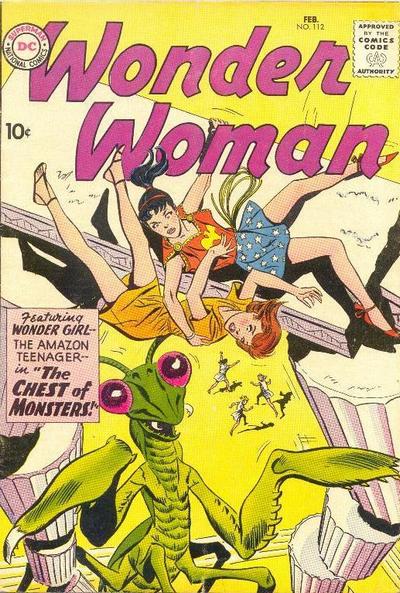
—
Wonder Woman #113 (April 1960).
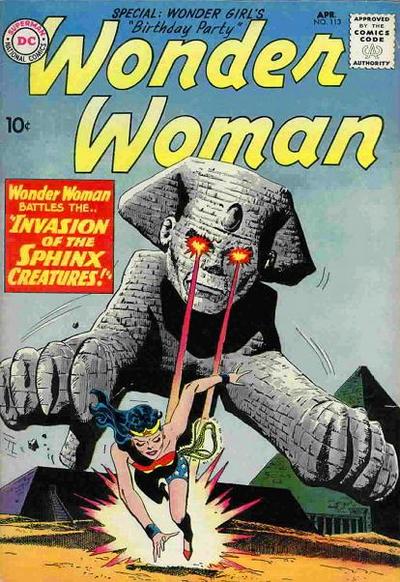
—
Wonder Woman #116 (August 1960). Also: Mer-Boy!
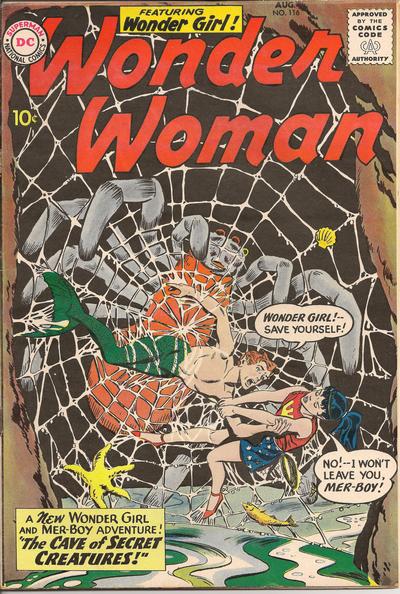
—
Wonder Woman #118 (November 1960). Save Merman. He can’t be half as annoying as Steve Trevor even if he does smell like fish.
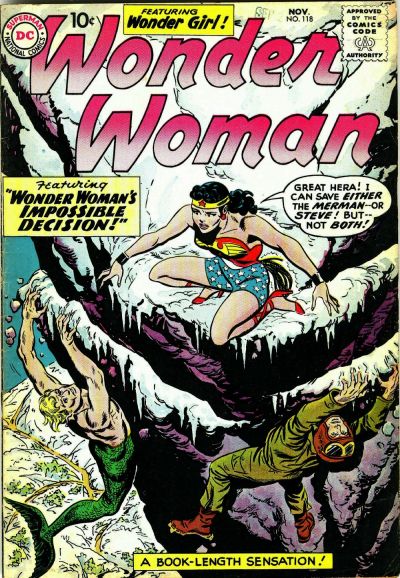
—
Wonder Woman #122 (May 1951). I promise, this will be the last time I say it, but damn… perspective!
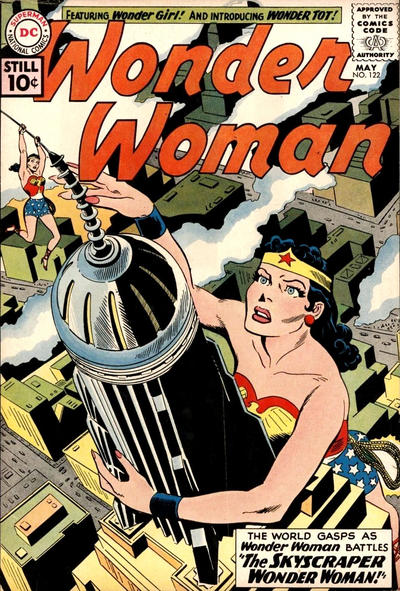
—
Wonder Woman #126 (November 1961)
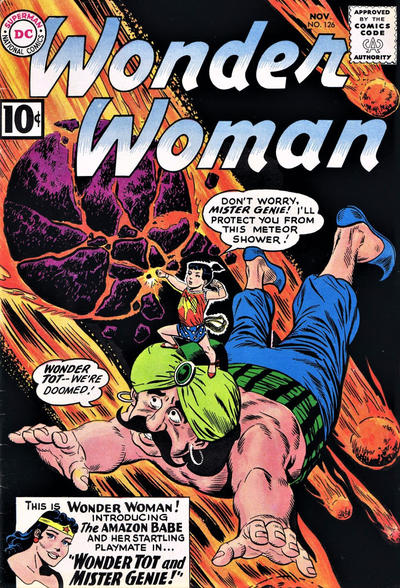
—
Wonder Woman #127 (January 1962)
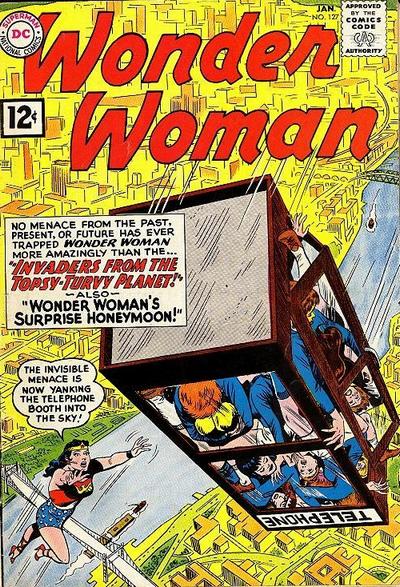
—
Wonder Woman #135 (January 1963). I lied. Perspective, baby!
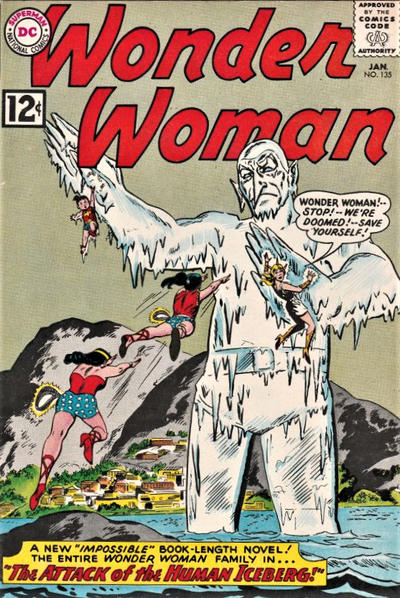
—
And a special birthday bonus, the double-page spread from Vigilante Annual #2 (1986), scripted by yours truly (my birthday was yesterday), pencilled by Ross, and inked by Tony DeZuniga!
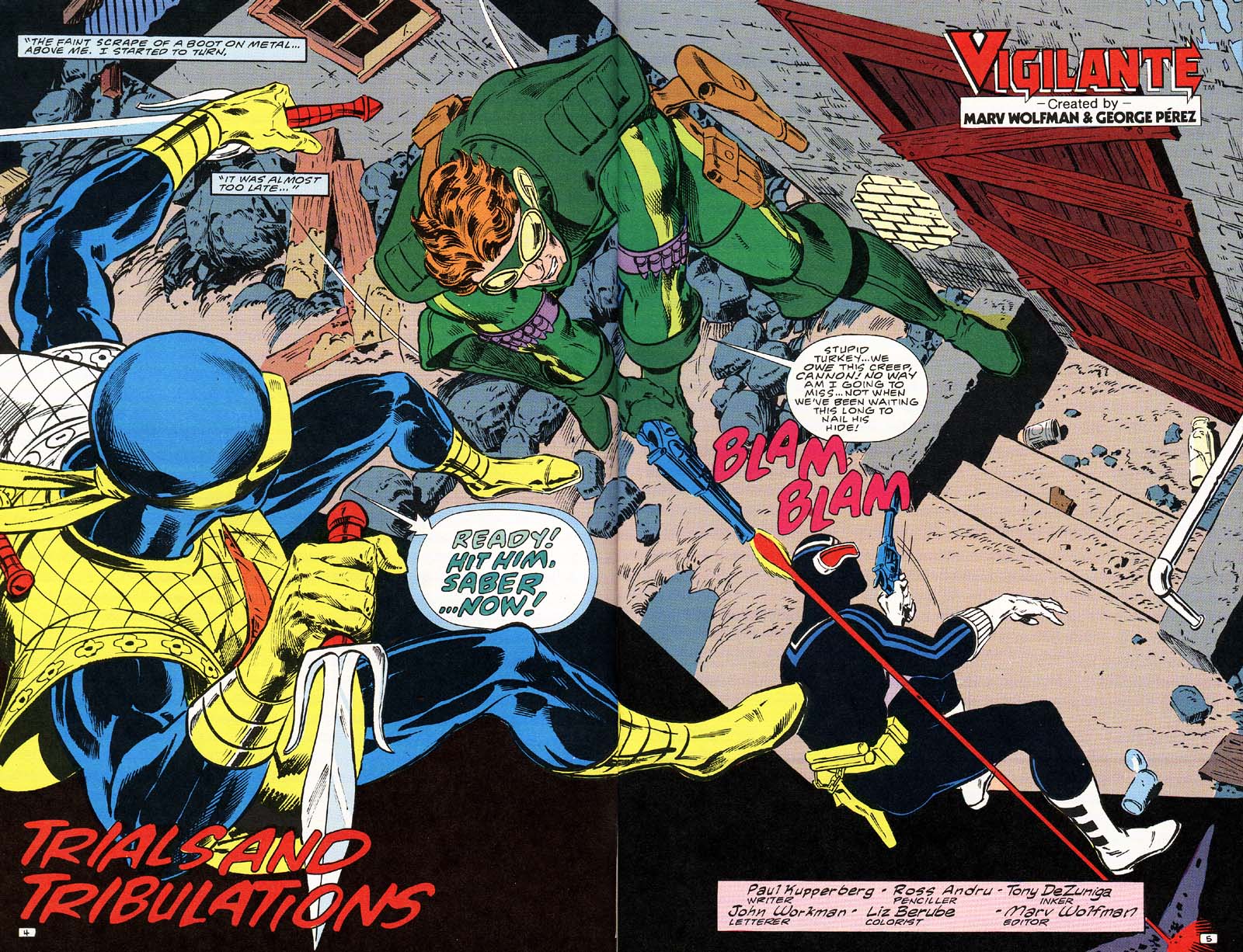
—
MORE
— The Two-Page Spread That Proves ROSS ANDRU Should Have Drawn a Lot More BATMAN. Click here.
— 13 Amazing ROSS ANDRU SPIDER-MAN Issues. Click here.
—
PAUL KUPPERBERG was a Silver Age fan who grew up to become a Bronze Age comic book creator, writer of Superman, the Doom Patrol, and Green Lantern, creator of Arion Lord of Atlantis, Checkmate, and Takion, and slayer of Aquababy, Archie, and Vigilante. He is the Harvey and Eisner Award nominated writer of Archie Comics’ Life with Archie, and his YA novel Kevin was nominated for a GLAAD media award and won a Scribe Award from the IAMTW. Now, as a Post-Modern Age gray eminence, Paul spends a lot of time looking back in his columns for 13th Dimension and in books such as his upcoming memoir, Panel by Panel: My Comic Book Life.
Website: https://www.paulkupperberg.net/
Shop: https://www.paulkupperberg.net/shop-1
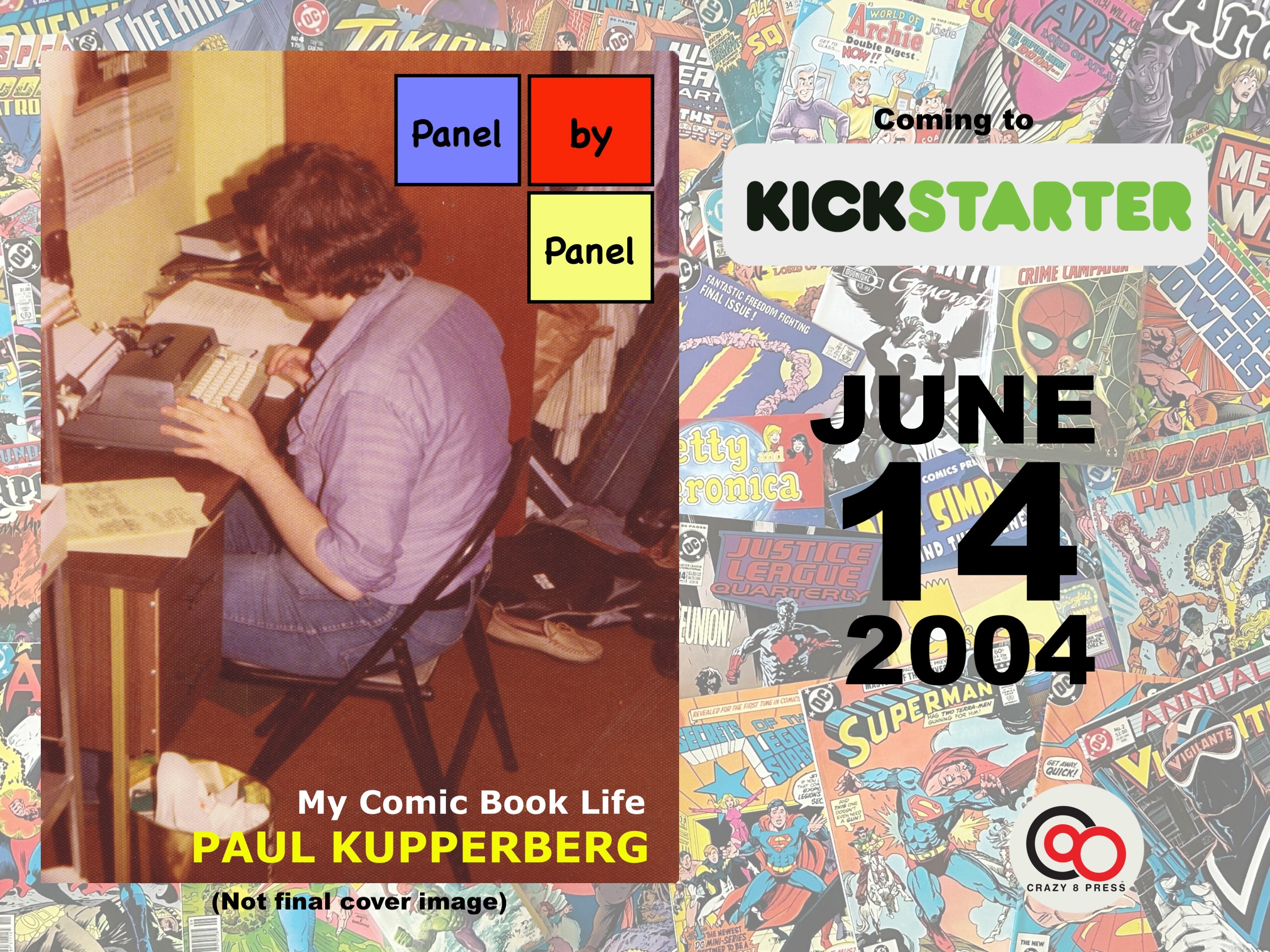

June 15, 2024
Great Stuff!
June 18, 2024
Isn’t Wonder Woman #100 considered the creation of the mutliverse since Diana meets her counterpart in another dimension prior to the The Flash meeting his counterpart in the Flash #123 (Sept. 1961)?